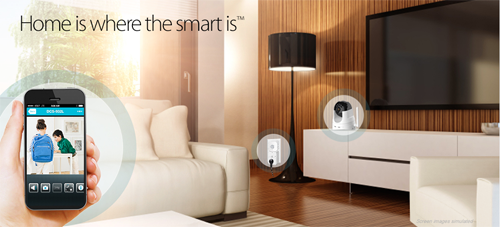How the IoT Will Bring Healthcare Anywhere
Meet FRIEND: Functional Robot arm with user-frIendly interface for Disabled people. Developed at the Institute of Automation at the University of Bremen, FRIEND is, for lack of a better term, a super-techno-wheelchair. Paraplegics and other severely disabled users can eat meals, shelve books and perform other tasks using its suite of cameras and robotic arms. However, it costs more than the annual income of an entire Midwest cul-de-sac neighborhood.
 Without FRIEND, many of the severely handicapped are relegated to dependency on assisted living centers. Healthier people follow the usual health care routine: brushing teeth, eating broccoli, swallowing multivitamin tablets and, come flu season, spending countless nighttime hours on WebMD in fevered hypochondria.
Without FRIEND, many of the severely handicapped are relegated to dependency on assisted living centers. Healthier people follow the usual health care routine: brushing teeth, eating broccoli, swallowing multivitamin tablets and, come flu season, spending countless nighttime hours on WebMD in fevered hypochondria.
This is the gap in modern healthcare. Over-the-counter medicines do little more than mute symptoms. Preventive medicines require prescriptions, and the best diagnostic tools are reserved for hospitals and the privileged few with $500 health insurance deductibles. That gap must be bridged. Relief, prevention and diagnosis, the bedrock stones of daily health care, must be integrated into the home.
The door to that future is the Internet of Things and the increasingly connected mobile apps, automated appliances and wearable technology that will revolutionize how people monitor and mend their health.
At the crest of the home automation wave are jaw-dropping, half-magical technologies like the Samsung Gear 2 Neo universal remote and heart monitor smartwatch, unveiled at CES 2015. When it comes to wearable health technology, human creativity fears no boundaries. The AiQBioMan t-shirt uses ribbed “smart sleeves” to measure skin temperature, heart rate and respiration rate. Moticon has a wireless shoe insole that measures force analysis for rehabilitation and sports analysis. Many wearable devices can alert doctors or caregivers after the wearer experiences increased blood pressure, a black-out or other trigger event.
But not all home automated healthcare technologies come with rhinestones or WiFi capability or high-definition screens. In 2009, Toto, a Japanese manufacturer of plumbing products, introduced the $6,100 Intelligence Toilet II. The commode, which also sports a blow dryer and heated seat, has a sample catcher that can monitor insulin and glucose levels, calculate body fat percentage, and extract other information from the renal system.
Toto’s smart toilet is part of a legion of reimagined home appliances, refrigerators and washing machines bestowed with IQs and robotic voices. LG launched a HomeChat-equipped refrigerator with an internal camera. Worried about milk and eggs? Pull up your smartphone and peek inside in real-time. Cuisinart SmarTrack food storage containers alert homeowners when a food’s expiration date has passed. In the near future, “smart” kitchen containers may be able to quantify food freshness, identify harmful bacteria and even suggest portion sizes – hopefully with discretion.
The final frontier of home automated health care is not computer chips, but standardization. Oodles of home security and automation networks compete for users: Wink, Connect, Nest, Health, HomeKit, etc. Appliances designed for one network cannot always “talk” to another. These proprietary platforms prevent mass access to “Big Data,” to the treasure trove of health information that physicians and researchers could use to identify macro, even generational, health trends.
Home automation technology has not yet freed paraplegics from the necessity of a FRIEND or similar machine. The technology behind the Internet of Things, the wearable super-watches of CES 2015, cannot (yet) mend a femur or cure Alzheimer’s. But what it can do is help people making healthier, more informed decisions. Researches can mine “Big Data” for geographic or demographic health trends. Patients with chronic illness can remake a life at home, a life monitored but independent.
The Internet of Things cannot mend a bone, but it can, for some, make a home.






